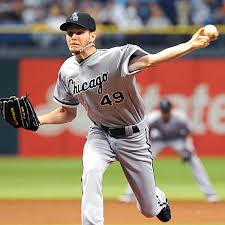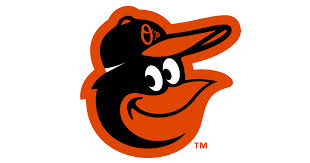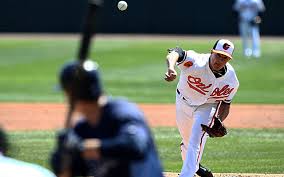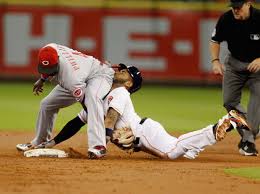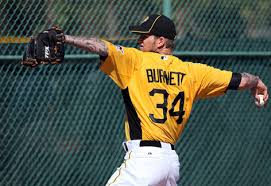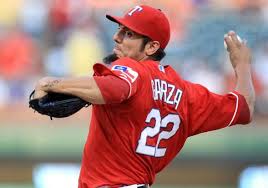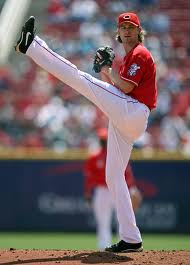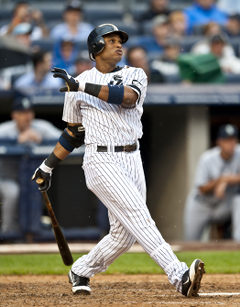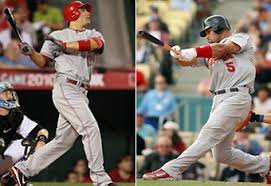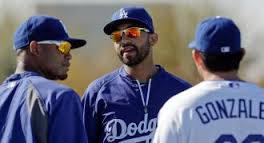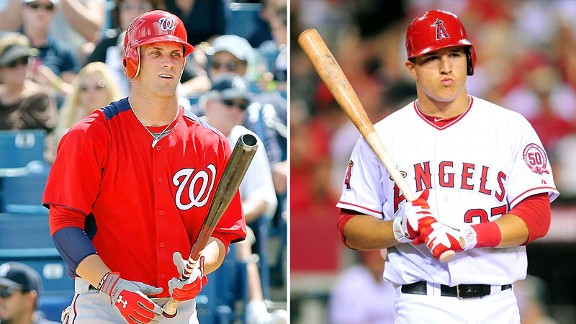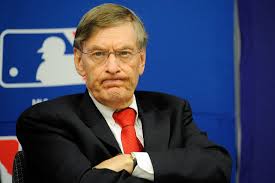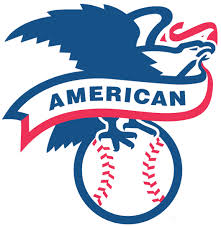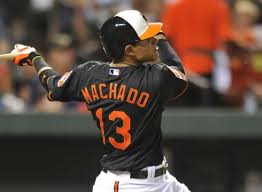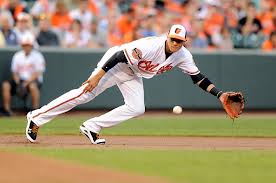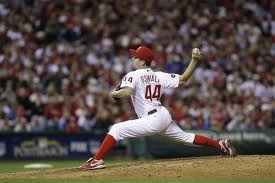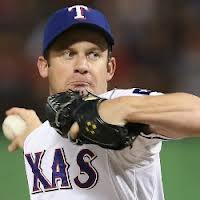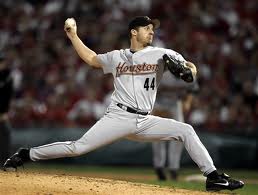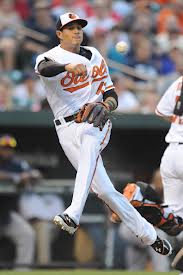It is that time of year again – when I make a fool out of myself by guessing who will end up as the 2016 MVPs, Cy Young Winners, Manager and Rookie of the Year winners, and name some sleepers. Last season, I boldly guessed that Mike Redmond would win the NL Manager of the Year award…but he was fired on May 19 after starting 16-22. So much for that. I did have some decent predictions, like Nolan Arenado breaking out and…well, that’s about it. It wasn’t a great year for inferences for me.
However, 2016 is going to be very different! Without further ado…
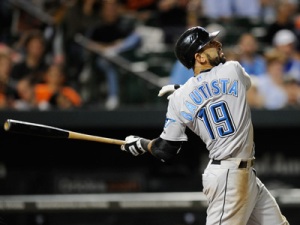
AL East
1. Toronto Blue Jays
2. Baltimore Orioles
3. Tampa Bay Rays
4. New York Yankees
5. Boston Red Sox

AL Central
1. Cleveland Indians
2. Kansas City Royals
3. Chicago White Sox
4. Detroit Tigers
5. Minnesota Twins
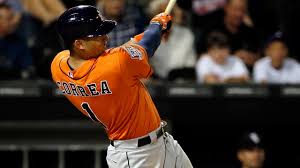
AL West
1. Houston Astros
2. Texas Rangers
3. Los Angeles Angels
4. Seattle Mariners
5. Oakland Athletics
AL Wild Cards
Kansas City Royals
Baltimore Orioles
NL East
1. Washington Nationals
2. New York Mets
3. Miami Marlins
4. Atlanta Braves
5. Philadelphia Phillies
NL Central
1. Chicago Cubs
2. Pittsburgh Pirates
3. St. Louis Cardinals
4. Milwaukee Brewers
5. Cincinnati Reds
NL West
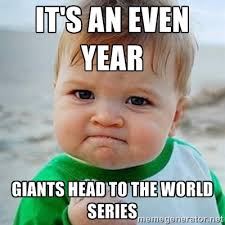
1. San Francisco Giants
2. Arizona Diamondbacks
3. Los Angeles Dodgers
4. Colorado Rockies
5. San Diego Padres
NL Wild Cards
Pittsburgh Pirates
New York Mets
World Series Prediction
Washington Nationals over Toronto Blue Jays in six games
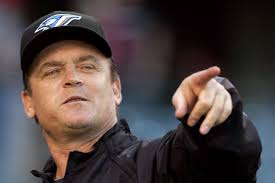
AL Manager of the Year: John Gibbons, Toronto Blue Jays
This HAS to be the year for Toronto. Why? Because both Jose Bautista and Edwin Encarnacion are free agents after the 2016 season, and early negotiations didn’t appear to go well, with rumors of “Joey Bats” wanting $30 million per year in his age 35 to age 40 seasons. Ask Nelson Cruz about being an aging slugger in the open market- how’d that go for him when he *settled* for a one-year deal for $8 million following the 2013 season? Still, Gibbons has a lot of talent to work with right now. With reigning AL MVP Josh Donaldson, a full season (maybe – pending health) from Troy Tulowitzki, and the two mashing free-agents-to-be, the Jays will have the power and offense to outscore anyone, which is just what they’ll have to do with their patchwork pitching staff. Gibbons will work some magic there, however, and lead Toronto back to the ALCS and an eventual World Series appearance.
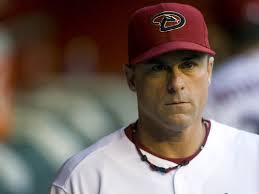
NL Manager of the Year: Chip Hale, Arizona Diamondbacks
Dave Stewart and Company have done some really wacky things since taking control of the Arizona front office; however, they have a really interesting team, quietly building around superstar Paul Goldschmidt with pieces and parts that could be All-Star caliber producers. After signing Zack Greinke and acquiring Shelby Miller, having Goldschmidt with A.J. Pollock and David Peralta provide punch in the lineup, along with a returning Patrick Corbin in the rotation, could lead to a sneaky breakout by the Snakes in a wide-open NL West. Hale, who has had success managing throughout the minors and led the Diamondbacks to a 16-game improvement from 2014 to 2015 in his first season. Arizona may miss the playoffs, but they’ll certainly be a thorn in the side of the league in 2016 thanks to talent and Hale’s management of the club.
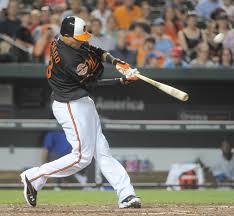
AL MVP: Manny Machado, 3B, Baltimore Orioles
Machado doesn’t turn 24 until July, but it seems like he has been around for a while already. Most of that time, he has been compared to the great Alex Rodriguez, and he proved that comparison was legitimate last season. Machado improved his strikeout and walk rates dramatically last season, while his hard contact rate also jumped – which was behind his 35 home runs – a whopping 21 more than his previous career-high (2013) – while he also stole 20 bases! More of the same should be expected, as Machado continues to fill out his body and fill up box scores. He’ll lead Baltimore to the postseason in 2016, with a bat that is as valuable as his glove, making him one of the most dominant players in the game.
NL MVP: Bryce Harper, OF, Washington Nationals
Harper won the NL MVP in 2015 after posting a 9.5 WAR in his age-22 season. He put it all together, blasting 42 home runs and leading MLB with a 1.109 OPS and 197 wRC+. He’s going to be better in 2016. The only thing that would prevent that from happening would be an intensity that makes injury-risk a possibility for Harper on every play…or getting walked like Barry Bonds. The sky is still the limit for this young man, and he continue his ascension to greatness in 2016.
AL Cy Young: Chris Sale, LHP, Chicago White Sox
After leading the AL in strikeouts and FIP on his way to setting career-bests in strikeout and walk rates, Sale could improve his overall numbers in 2016. The four-time All-Star will finally get the award that he has earned by posting a 2.95 ERA, 1.07 WHIP, and 10.3 K:9 over the last four seasons for Chicago. He’ll continue to look like he could be blown away due to his frame, while dominating the opposition on his way to his finest season yet. Perhaps he will even win this one for Drake LaRoche.
NL Cy Young: Clayton Kershaw, LHP, Los Angeles Dodgers
Kershaw disappointed in 2015, seeing his ERA balloon to 2.13 on his way to a 3rd place finish for the NL Cy Young. That is, of course, sarcasm, as Kershaw led the league in complete games, shutouts, innings, strikeouts, and FIP. He will lead a depleted Dodgers rotation, taking on the innings that they won’t get from the other rotation members, as he continue being the Sandy Koufax of our generation. Enjoy it while it lasts!
AL Rookie of the Year: Jose Berrios, RHP, Minnesota Twins
For purposes likely tied to free agency control, the Twins didn’t give Berrios a look at all in 2015, even though he could have been the club’s best starting pitcher the moment that he joined the rotation. He has tremendous command of his stuff, and he continues to improve as he rises up through the system, which is an excellent sign for the pitching-starved Twins. The knock on Berrios is his height, but after watching Johnny Cueto, Yordano Ventura, Marcus Stroman, and Tim Lincecum (not as much recently) over the last several years, no one will be looking down on this young man when he can pitch the way that he can.
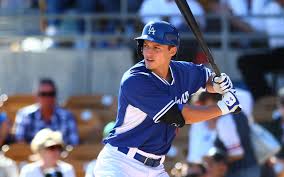
NL Rookie of the Year: Corey Seager, SS, Los Angeles Dodgers
Seager was the No.1 prospect on my prospect list this winter, after the 21-year-old followed up a roasting of the minors with 98 at-bat barrage on Major League pitching, posting a .337/.425/.561 triple-slash in his cup of coffee. He looks like the Dodgers’ Opening Day shortstop (pending injury news) and he could thrive in a lineup with so many other talented players around him. He could easily become one of the top two players offensively for this club immediately, especially with the questions surrounding Yasiel Puig after his down 2015 season. While he may not fit at shortstop for his entire career, Seager is capable of a 20/20 season at short in his first full season.
10 BOLD Predictions
- Jeff Samardzija rebounds in AT&T Park and the spacious parks out west to become a top 20 starting pitcher. He strikes out over 200 and logs 200 innings, becoming a tremendous compliment to Madison Bumgarner in the San Francisco rotation.
-

Buxton could be special…as early as this season! Byron Buxton steals 40 bases and shows glimpses of power, topping out at 15 home runs, while showcasing elite-level defense. The Twins finish in last place in the AL Central, but Buxton and Miguel Sano are All-Stars.
- Joey Votto walks 130 times. There is no reason to pitch to him with the rest of the Reds lineup as incapable of producing as an army of ants.
- Starlin Castro becomes an All-Star at second base for the New York Yankees, leading the American League in hits. The change of scenery was necessary and helped him find his groove.
- Corey Kluber and Carlos Carrasco become as dominant together as Kershaw and Greinke were in Los Angeles in 2015…with slightly higher ERAs. They win 35 or more games, log 450 or more innings, and strike out 470 or more batters combined.
-
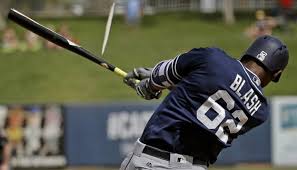
A Rule 5 pick worth high fiving about! Blash can BASH!
Courtesy: mighty1090.comJabari Blash is the best Rule 5 pick since Johan Santana, as he becomes the Padres best position player in 2016. The Mariners weep as Nori Aoki starts 155 games in left with less than Blash-y production.
- Mike Trout finishes outside of the top 3 in AL MVP voting because his WAR declines due to Jared Weaver giving up 85 home runs in 115 innings, not allowing Trout to flash his glove, range, and UZR skills.
- Billy Hamilton loses the center field job to Phillip Ervin in June. Ervin starts hitting how he did at Samford and soars through Double-A and Triple-A. Hamilton is recalled in September to be a pinch-runner, stealing 25 bases in one month and winning fantasy leagues for those who stashed him.
- Pablo Sandoval goes on a hunger strike until he is given the third base job over Travis Shaw. He is never seen again. The Red Sox eat his contract and release him, which is funny because he ate his own contract and couldn’t let go of food. Irony.
- Lorenzo Cain is a top 5 WAR position player due to his great defense and his continued breakout. Cain finishes with 20 HR/30 SB and 100 runs scored.
10 BOLD Sleepers
- Patrick Corbin, LHP, Arizona Diamondbacks: This guy is two years removed from Tommy John surgery, and he is throwing harder than he ever did before. Keep in mind, he won 14 games, struck out 178, and had a 3.41 ERA over 208.1 innings in 2013, his last full season, before looking very good over 16 starts last season.
- Carlos Rodon, LHP, Chicago White Sox: Rodon will either look as dominant as Sale or look like he hasn’t been on a mound before in his life. The stuff is there to be elite, but it is so strong that he has to figure out how to harness it still. This is the year that he does.
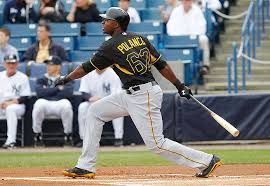 Gregory Polanco, OF, Pittsburgh Pirates: Polanco had a slight bump in ISO last year, but that slight bump should be a significant bump in his 2016 season. At the age of 24, Polanco will change some of those 35 doubles into home runs in 2016, as that long, lanky body begins to fill out. Look for 15 to 20 bombs in 2016 with a slight drop in his 27 steals – since he’ll be busier rounding the bases in a trot.
Gregory Polanco, OF, Pittsburgh Pirates: Polanco had a slight bump in ISO last year, but that slight bump should be a significant bump in his 2016 season. At the age of 24, Polanco will change some of those 35 doubles into home runs in 2016, as that long, lanky body begins to fill out. Look for 15 to 20 bombs in 2016 with a slight drop in his 27 steals – since he’ll be busier rounding the bases in a trot.- Justin Verlander, RHP, Detroit Tigers: A six-time All-Star and one-time Cy Young winner isn’t typically a sleeper, but Verlander sort of returned to form in the second half of last season, posting a 2.80 ERA over 103 innings and 15 starts. While the 8.30 K:9 over those starts isn’t his elite level, it also was much higher than his down 2014. Over 20 starts, Verlander had a 3.38 ERA and 3.49 FIP, while he is still below the league average in HR/FB%. If you can get him late, Verlander is worth a look in fantasy. If you don’t play fantasy, his girlfriend is worth a look in your own fantasy.
- Ian Kennedy, RHP, Kansas City Royals: After finishing 9-15 with a 4.28 ERA while pitching half of his games in San Diego, it seemed rather shocking that the Royals would give up a draft pick and pay $70 million over five years for Kennedy; however, Dave Eiland has worked miracles before, and Kennedy looked a bit more like himself in the second half, when he posted a 10.5 K:9. He can’t do any worse than Cueto did after K.C. acquired him from the Reds in the middle of the 2015 season. Count on Eiland, Kennedy, and an impressive defense to get his numbers back to respectability.
- Eduardo Escobar, SS, Minnesota Twins: Danny Santana had the Twins shortstop job going into 2015 after a breakout 2014. Then, he lost the job and Escobar ran away with it, ripping 31 doubles and 12 home runs over 127 games and 446 at-bats. While he isn’t going to do a whole lot more than that (he doesn’t run), he could, in his age-27 season, see those numbers improve over a full season where he isn’t sharing the job.
- Jonathan Schoop, 2B, Baltimore Orioles: I’ve been a Schoop fan for about four and a half years now. He has power and he has absolutely no plate discipline, as evidenced by his career 203:23 K:BB over 817 plate appearances. But we are in an offense-starved era, and the Orioles have other players with similar profiles who have developed into solid producers (see Jones, Adam). Schoop had 32 extra-base hits (including 15 homers) in just 86 games and 321 plate appearances. He’s capable of 25 home runs and 30 doubles…possibly even 15 walks…over 550 plate appearances. He turned 24 in October and is primed for further opportunities and a potential breakout.
- Trevor Story, SS, Colorado Rockies: Imagine a place with a high altitude where balls travel far. Now…imagine a shortstop who had 70 extra-base hits (20 HR) and 22 stolen bases between Double-A and Triple-A. That would be this 23-year-old, who, with Jose Reyes‘…ahem…issues, should be in line for plenty of playing time for the Rockies to start the season. He and Nolan Arenado could provide some pretty impressive numbers on the left side of the infield.
-
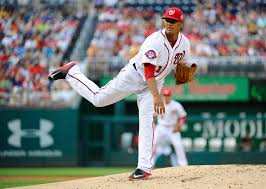
Courtesy: federalbaseball.com Joe Ross, RHP, Washington Nationals: The younger brother of Padres pitcher Tyson Ross, Joe Ross is in a great situation in Washington. At 22, he seems unlikely to be bumped from the rotation when Lucas Giolito is ready – that is likely going to be Tanner Roark, who pitched out of the bullpen most of the 2015 season. Ross did a really nice job in his 76.2 innings last year, posting an 8.1 K:9 and walking just 2.5 per nine. It is quite possible that he outperforms Gio Gonzalez in the Nationals’ rotation in 2016.
- Colin Rea, RHP, San Diego Padres: Rea had eye-popping numbers in Double-A last year (1.08 ERA, .185 BAA in 75 innings), which promptly elevated once promoted to El Paso (a hitter’s paradise). He held his own in his taste of the majors last season, posting a 4.26 ERA and holding opponents to a .246 average. Now, he’ll have an improved defense behind him, Rea, 25, is ready to take his fastball that can touch 95 to a pitcher’s paradise. Let’s hope he can do better than Ian Kennedy did last year. He is capable of Kennedy’s production – minus the strikeouts.
